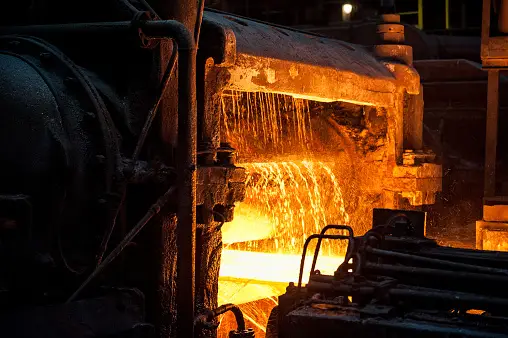
The Art and Science Testament of Sheet Metal Flattening
2024-03-24 17:28:10
In the world of metalworking, few processes are as crucial yet intricate as sheet metal flattening. This essential technique involves transforming curved or bent sheets of metal into a flat or near-flat state, making them suitable for a wide range of industrial applications. From automotive manufacturing to architectural design, the process of sheet metal flattening underpins the precision and quality of the final product.
At its core, sheet metal flattening is a delicate balance between force, material properties, and the skilled hands of the craftsman. The metal, often made from materials like stainless steel, aluminum, or galvanized steel, comes in various thicknesses and grades, each requiring a unique approach to achieve the desired flatness.
The flattening process typically begins with an assessment of the metal's curvature and any pre-existing stresses or deformations. This evaluation dictates the method and tools required to straighten the sheet without causing damage or compromising its structural integrity. Techniques such as roller leveling, hammering, or press brake forming are employed to gradually coax the metal into a flatter state.
One of the critical aspects of sheet metal flattening is the need for precise measurement and control. Modern workshops often incorporate advanced equipment such as laser scanners and computer-aided design (CAD) software to map out the exact contours of the sheet and calculate the optimal flattening route. These technologies enable a level of accuracy that was once unattainable through manual methods alone.
However, despite the availability of high-tech solutions, the skill of the worker remains indispensable. Experienced artisans can detect subtle variations in the metal's response to force and adjust their techniques accordingly. They understand that the success of flattening is not just about achieving a uniform surface but also about maintaining the material's inherent strength and flexibility.
The importance of sheet metal flattening extends beyond aesthetics. A flat sheet is easier to cut, shape, and assemble into complex structures, ensuring that components fit together seamlessly. In industries where precision is paramount, such as aerospace or medical device manufacturing, the ability to achieve a high degree of flatness is critical for performance and safety.

Search
Categories
Recent News
Achieving Precision with a Four-Roll or Four-High Leveling Machine Design
2025-10-22 12:00:00
The Importance of Internal Stress Released in Metal Components
2025-10-18 12:00:00
How a Decoiler Straightener Feeder Integrates into Automated Systems
2025-10-15 12:00:00
Comparing Manual Leveling Machine and Hydraulic Leveling Machine Options
2025-10-14 12:00:00
The Process of Sheet Metal Flattening for Superior Surface Quality
2025-10-13 12:00:00
Key Considerations for Selecting a CNC Leveling Machine
2025-10-10 12:00:00
Understanding the Role of a Straightening Machine in Metal Processing
2025-10-11 12:00:00
How a Roller Leveler Improves Material Flatness in Production Lines
2025-10-09 14:07:26
High Precision CNC Leveling Machine: The Backbone of Modern Metal Production
2025-09-29 12:00:00
Metal Straightener Machine: Versatile Solution for Metal Flattening Needs
2025-09-12 12:00:00
Metal Straightener Machine: Boost Productivity in Sheet Metal Manufacturing
2025-09-05 12:00:00
Straightening Machine Manufacturer: Advanced Technology for Flawless Leveling
2025-08-12 12:00:00
Straightening Machine Manufacturer: Precision Solutions for Metal Forming
2025-08-08 12:00:00
The Role of Sheet Metal Flattening Machine in Modern Manufacturing
2025-07-30 12:00:00
How Sheet Metal Flattening Machines Revolutionize the Metalworking Industry
2025-07-22 12:00:00
Enhance Production Efficiency with Sheet Metal Flattening Machine
2025-07-18 12:00:00
What is a Sheet Metal Flattening Machine?
2025-07-14 12:00:00
Bauschinger Effect Exporter: Understanding Its Role in Sheet Metal Leveling
2025-07-01 12:00:00
What Is High Quality Improve Flatness?
2025-06-17 12:00:00
Exploring the Top Chinese Roller Leveler Merchants for High-Quality Machines
2025-06-03 12:00:00
Boost Metal Processing Efficiency with the NCLT50-1000 3-in-1 Feeder Machine
2025-06-18 17:38:33
Sheet Metal Flattening An Introduction and Comprehensive Guide
2024-04-30 15:06:53
Revolutionizing Construction with Leveling Machine Technology
2024-03-29 09:40:20
The Art and Science Testament of Sheet Metal Flattening
2024-03-24 17:28:10
How to Operate a Leveling Machine: A Comprehensive Guide
2024-02-23 10:27:07
The Impact of Leveling Machines on Efficiency in Construction
2024-01-22 16:34:02
Increase productivity with advanced Roller Leveler Machine
2023-11-29 11:38:58
Understand the functions of Roller Leveler Machine
2023-11-29 11:28:38
Customers come to the company to choose precision leveling machines
2023-11-02 16:41:29
What factors will affect the price of the leveling machine
2023-07-16 15:40:24


















































